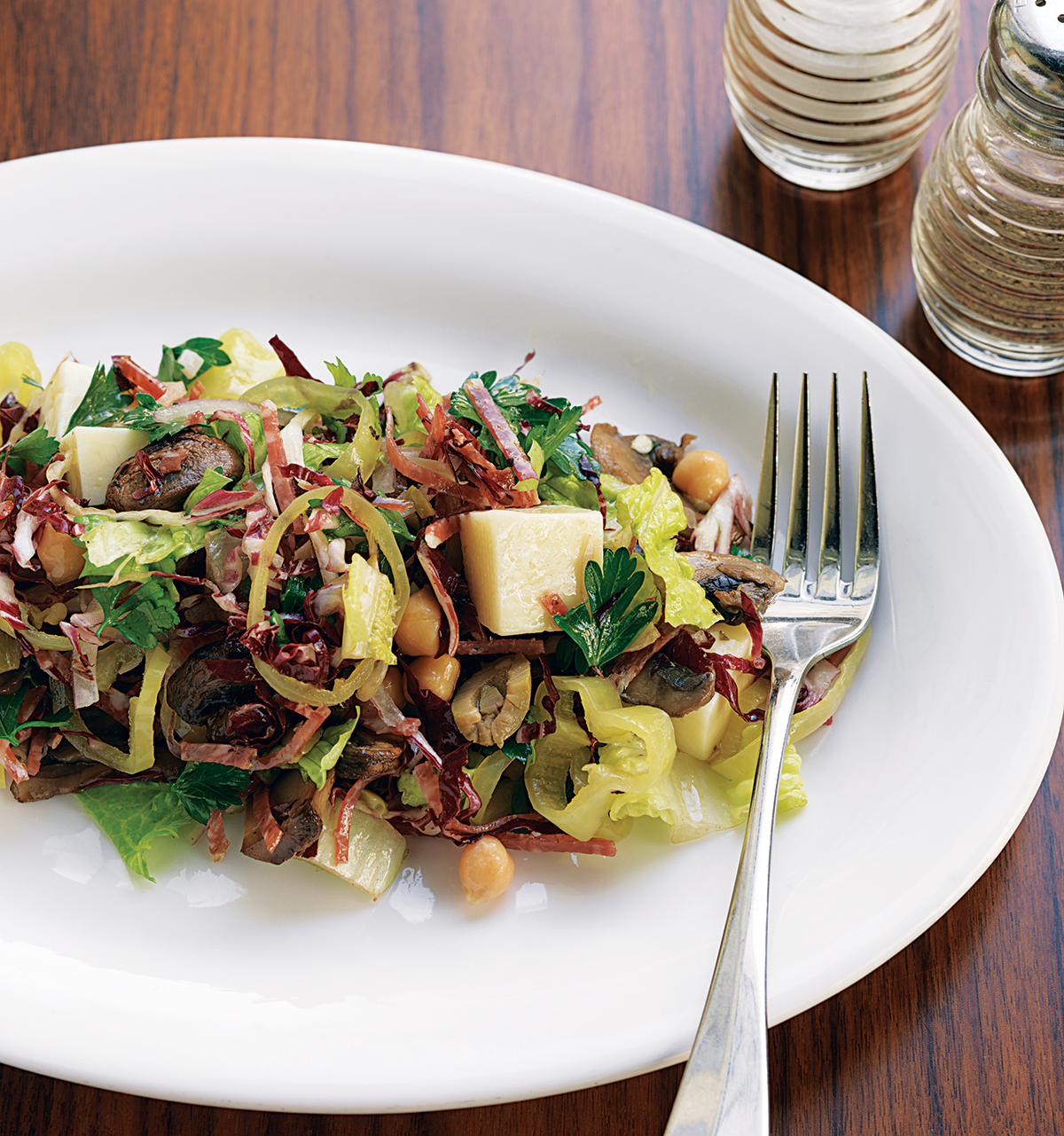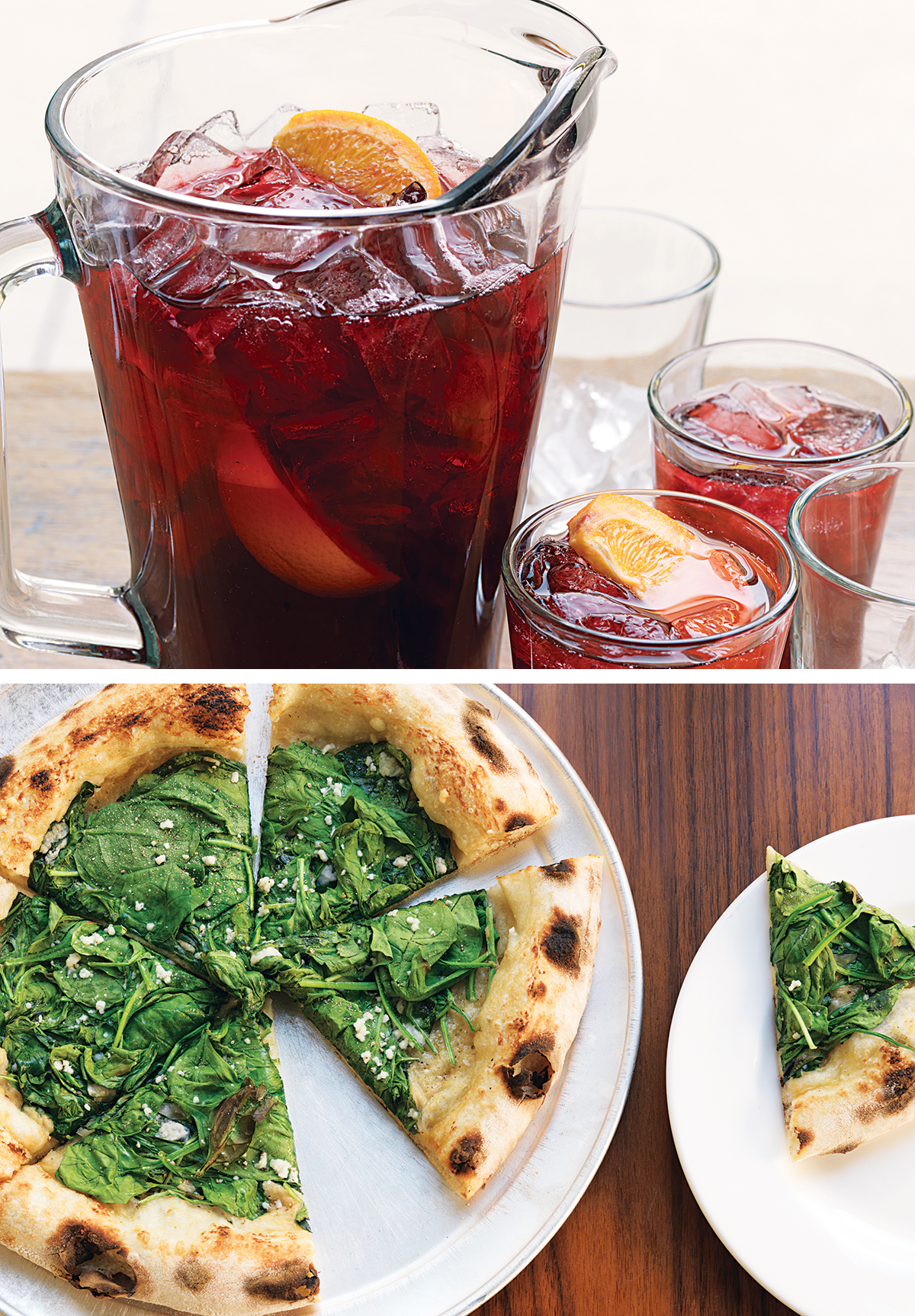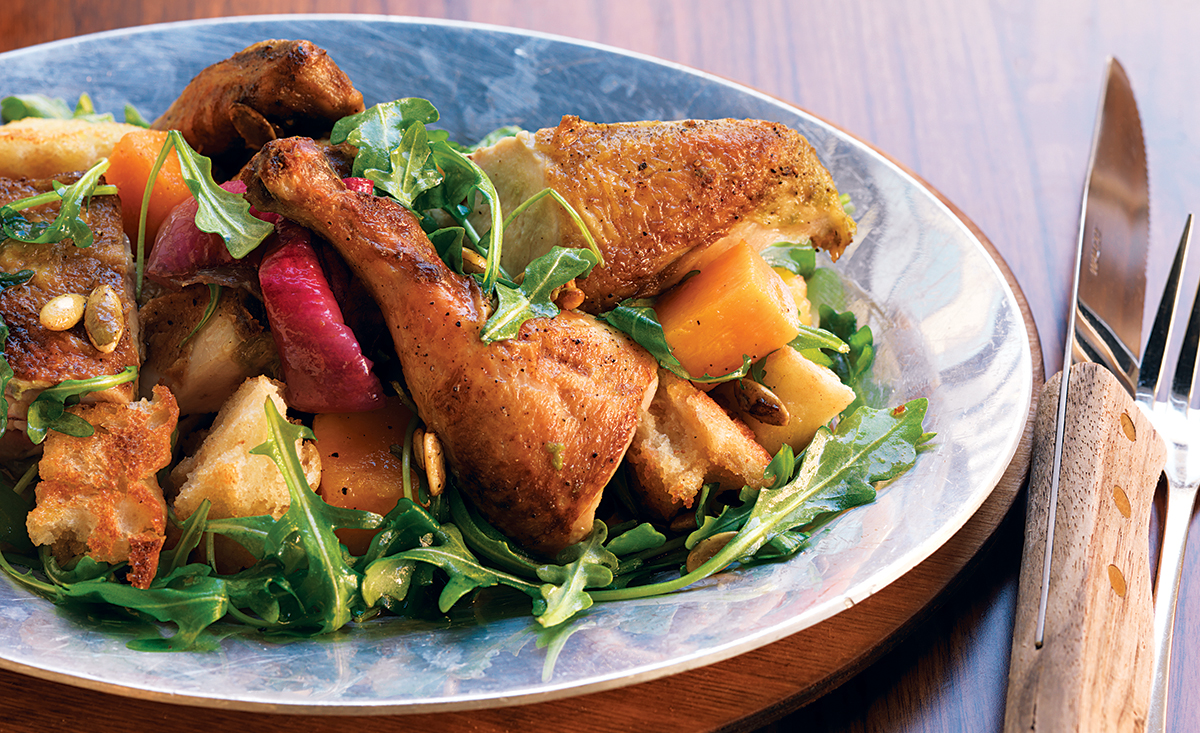Dining Out: Area Four

Photo by Michael Piazza
Finally, there’s a restaurant making seasonal and locally raised food that doesn’t take itself too seriously. It’s about time. Freewheeling whimsy has certainly never been a focus at chef Michael Leviton’s other restaurants, both pioneers in our sustainable-dining scene: Lumière, his Newton flagship, serves carefully made, French-influenced food, and has exceptional service. Persephone, his short-lived restaurant attached to a hip boutique in Fort Point, was a chic, glossy place anchored by a lively bar.
Area Four, Leviton’s latest venture, is more relaxed and confident than Persephone was. Out front, there’s a bakery-café that’s sunny and crowded in the mornings, when it serves workers in the MIT-owned Technology Square (between Kendall and Central squares). There’s a bar where young people gather later in the day for one of the dozen beers on tap or a glass from the list of sustainable wines. The tables in the dining room — which run along a central track, so they can be pushed together or separated depending on the size of the group—work with the retro metal chairs and student-y bar scene to give Area Four a cool-school feel.
Bargoers or diners might order one of the superior pizzas—which, together with the standout cookies and morning baked goods, are the key to Area Four’s success. The clear focus is on food cooked in a wood-fired oven, and unfussy dishes that show off the ingredients rather than the chef. The open kitchen runs half the length of the dining room, and part of the wall below is lined with neatly cut logs, many decoratively branded with the restaurant’s brawny logo. It’s a reminder that much (though not all) of the food takes a trip into that oven, built by Wood Stone (the same company that created the large oven at the center of Jody Adams’s new restaurant, Trade).
The pizzas, with their painstakingly made, long-risen dough, have something that deprived Boston pie lovers have been longing for: a potent, seemingly inexhaustible supply of garlic. Leviton told me that he based his dough tinkerings on his college-era forays to the dual New Haven shrines of Pepe’s and Sally’s, where garlic reigns on everything “white” and on quite a few tomato-slathered pies, too. The flavor is at its purest in the baby-spinach pizza ($13 for a 10-inch, $20.50 for a 14-inch; shown right), which features a smooth, milky-looking garlic purée that stealthily roars into your mouth beneath a camouflage carpet of papery, charred leaves. Yet unlike at most Italian-American places powered by garlic (as true Italian restaurants almost never are), the flavor was fresh and bright, without a hint of the harsh, burned taste too often synonymous with garlic. And the dough honored its Connecticut inspiration: thin in the middle, with a high, chewy lip. The pecorino cheese that Leviton grates onto many pies added a salty tang that, like the garlic and the dough, was reminiscent of New Haven pizza.

Photos by Michael Piazza
The margherita ($10.50 for a 10-inch, $17 for a 14-inch) showcased another homemade ingredient with which Leviton excels: the mozzarella he makes at least once, and often twice, a day. It’s not just impeccably fresh and moist and free of acidity, it also has actual flavor — so much that I assumed the cheese was imported when I had it in an appetizer with green olives, peppered walnuts, and flat-leaf parsley ($6.50).
In addition to the pizza, the things to order are salads, mac ’n’ cheese, chicken, and dessert. (Save room.) The salads are bold and straightforward. You don’t often think of salads as being masculine, but you don’t see a “kitchen-sink” salad ($12) very often, either. It’s a take on a California chopped salad, light on the romaine and radicchio and heavy on the Tuscan salame, chunks of fontina, roasted mushrooms, and vinegary pickled banana peppers—not a dish for wimps. The anchovies in the lemon vinaigrette and the green olives add a powerful lashing of salt — a flaw of all the salads, which otherwise have marvelously fresh ingredients. Salt and all, though, I craved more of that kitchen-sink salad whenever I went back, and also the toasted, peppered almonds on the arugula salad ($8), with greens and shaved fennel. Even better, if yet saltier, was the salad of shaved Brussels sprouts and Tuscan kale ($10), the main ingredients shredded so thin they were unrecognizable and topped with deep-flavored roasted hazelnuts.
Mac ’n’ cheese ($11) showed off the power of the oven, the big shells al dente, napped in a thick béchamel sauce, and baked in a shallow cast-iron skillet for maximum browning. The gremolata-and-croissant-crumb topping was superb, and a clever way to use day-old or unsold croissants. The dish is big enough for a satisfying bargain main course.
But spend a bit more for the roast chicken ($19; shown right), really a warm main-course salad. It’s like the best of a holiday meal after you’ve gone back for seconds, with everything mixed together on the same plate: arugula leaves, squares of butternut squash, toasted pumpkin seeds, and sourdough croutons permeated with cider vinaigrette and chicken jus. It’s an unapologetic take on chef Judy Rodgers’s chicken-and-bread salad at Zuni Café in San Francisco, which, along with Gordon Hamersley’s roast chicken, is the best chicken dish in the country. It’s also a very worthy rendition, the bird brined and marinated and full of flavor. Don’t miss it.

Photo by Michael Piazza
A rustic presentation of roast Crystal Valley Farms half chicken with arugula.
You can miss the roast fish, which changes daily. The swordfish I tried ($24) was fresh, but not much helped by acidic tomato sauce; the roasted vegetables with it were more impressive. And the grass-fed-beef meatloaf cheeseburger ($14) on a buttered kaiser roll seemed a bit dry (a comment that will drive Leviton crazy, as we have our differences on how grass-fed beef should taste). But I did enjoy the burger’s excellent mushrooms, caramelized onions, and spicy house-made pickles. More-successful meat dishes included an appetizer of coarse-chopped, Marsala-marinated duck livers on homemade crostini ($6.50), and fennel-sausage pizza with pickled banana peppers ($14 for a 10-inch, $21.50 for a 14-inch).
Dessert is where Leviton’s team really has fun. The homemade soft-serve ice cream ($6) can be topped with sauces, each better than the last: marshmallow, fudge, salted caramel, and berry. You can add bacon, maple candies, and other options for just 50 cents a pop. The rich, frozen-custard-like base is a perfect vehicle for smooshing in everything else. Oh, and the cookie crumbs! They’re an ingenious use of leftover cookies from the bakery. Repurpose, recycle, reinvent: This is the kind of green dining that everyone will enjoy.
MENU HIGHLIGHTS
Kitchen-sink salad with salame, fontina, pickled banana peppers, chickpeas, and green olives, $12
Red sangria by the pitcher, $30
Baby-spinach pizza with garlic sauce and pecorino, $13 for a 10-inch, $20.50 for a 14-inch
Plus | Fresh mozzarella with green olives and peppered walnuts, $6.50 | Mac ’n’ cheese with croissant-crumb topping, $11 | Margherita pizza, $10.50 for a 10-inch, $17 for a 14-inch | Roast half chicken with arugula, squash, apple, and pumpkin seeds, $19 | Soft-serve ice cream, $6, plus 50 cents per topping
500 Technology Sq., Cambridge, 617-758-4444, areafour.com.
Critic Corby Kummer—an editor at the Atlantic and author of The Pleasures of Slow Food—has been reviewing Greater Boston’s top restaurants in our pages since 1997.


